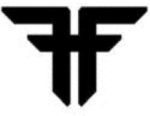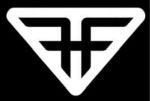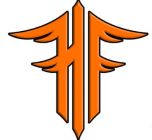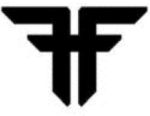Can Argentina-based Cool Brands Supply SA, a well-known brand among skateboarders, prevail in its recently filed trademark infringement lawsuit against LIV Golf Inc. and HyFlyers GC — one of LIV Golf's 12 teams, captained by Phil Mickelson?
Cool Brands owns the Fallen brand and U.S. Registration No. 6,874,791.
It covers a logo, which can be described as comprising opposing capital "F" shapes back-to-back with an intersecting bar, for several clothing items including hats, headgear, pants, shirts, socks, belts, jackets and jerseys.

Cool Brands claims LIV Golf and the HyFlyers used a logo, which can be described as comprising opposing capital "F"s with an intersecting bar in a triangular background or environment, on goods that are arguably the same but marketed to golfers instead of skateboarders.

According to Cool Brands' complaint in Cool Brands v. LIV Golf, filed in the U.S. District Court for the District of New Jerseyin June, its counsel sent a cease-and-desist letter to counsel for LIV Golf on March 24.
The letter noted that the logo being sported by LIV Golf's HyFlyers team was virtually identical to the logo used by Cool Brands on footwear and an apparel line named Fallen, and that the logo was the subject of a 20-year-old federal registration covering footwear and apparel.
Cool Brands' counsel went on to make the standard demands for cessation of use and an accounting and destruction of all remaining inventories of products bearing the infringing logo.
In a brief reply dated April 12, counsel for LIV and the HyFlyers said the logo marks were not sufficiently similar as to cause confusion among consumers.
With the parties seemingly at a standoff, Cool Brands sued LIV and the HyFlyers. Thus, at least legally, the answer to this question will be decided based on an application of 10 factors identified by the U.S. Court of Appeals for the Third Circuit in the trademark infringement matter of Interpace Corp. v. Lapp Inc. in 1983.1
The Plaintiff's Mark, Defendant's Actions and Consumer Reaction
The 10 Lapp factors can be broken into these three categories of questions or inquiries:
Group A: Factors pertaining to the plaintiff's mark
- Similarity of the marks in question; strength of the plaintiff's mark, including its distinctiveness; and
- Relative pricing of the goods or services in question, and similar factors that bear on consumer care and degree of attention when purchasing.
Group B: Factors pertaining to the defendant's actions
- The length of time the defendant has used the mark without any actual confusion; and
- The defendant's intent in adopting the accused mark, including whether the mark was adopted to intentionally compete, any targeted and overlapping sales and marketing efforts, and how long the accused mark has been in the market without confusion.
Group C: Factors bearing on how consumers deal with both marks
- Evidence of any actual confusion;
- Whether the goods are marketed or advertised in the same trade channels;
- The degree to which targets of the parties' sales efforts are the same;
- The relationship of the goods in the minds of consumers; and
- Other factors suggesting that consumers might expect the plaintiff to make both products or make products in the defendant's market, or expect that the plaintiff is likely to expand into the defendant's market.
Concerning Group A's factors, it seems hard to contest that the HyFlyers marks bear a striking resemblance to Fallen's marks.
Both logos appear to comprise opposing capital "F" shapes back-to-back with a horizontal bar or line drawn through them. If you look very closely, the lines making up the Fallen logo seem to have blunted tips, whereas all the tips or ends of the lines in the HyFlyers logo are sharp or pointed.
Also, the HyFlyers logo is represented in a lined triangular context, whereas the Fallen logo is not shown in any such environment. Apart from these minor distinctions — and you need to look closely to see them — I believe it would be hard to conclude that the marks are not very similar, if not substantially identical.
Regarding the strength of the Fallen logo, including its distinctiveness, that factor will be decided based on evidence the parties adduce concerning other marks in the footwear and apparel markets, if any, that can be considered similar to the plaintiff's mark. The fewer the number of marks that are shown to be similar to the plaintiff's mark, the stronger this factor will be for Fallen.
On the issue of relative pricing of the respective products sold under the respective brands, LIV is likely to argue that all the subject goods are relatively expensive and that when consumers make relatively expensive purchases, they exercise a higher degree of care and, thus, are less likely to be confused. It will be interesting to see how Cool Brands addresses this factor.
Concerning Group B's factors, these bear on the defendant's conduct and actions, and these are the factors most likely to create some fireworks.
Cool Brands will, no doubt, argue that its logo has been registered for over 20 years, i.e., since Oct. 18, 2002, and that sophisticated and well-funded parties such as LIV and the HyFlyers routinely work with top trademark law firms whose fundamental guidance is always to conduct searches for potentially conflicting marks or logos before adopting a new brand.
The plaintiff will note this advice applies especially when a new brand is expected to be used conspicuously by the world's top golf professionals and in widespread national and potentially international advertising and promotional campaigns.
Whether LIV ever actually conducted any searching, however, will likely never be revealed due to attorney-client privilege. But Cool Brands will definitely score some points on this factor.
Now, here is the really interesting stuff. Cool Brands will make a huge deal out of the fact that, in 2022, the HyFlyers logo looked like this:

This logo shows what can be described as a winged capital "H" closely adjacent and parallel to a winged capital "F."
A reasonable person might conclude that there exist several points of distinction between the fanciful HyFlyers logo — which LIV and the HyFlyers used during the 2022 golf season — and Cool Brands' opposing "F" logo.
Significant unanswered questions, however, are swirling, such as: Did LIV and the HyFlyers know about Cool Brand's logo and federal registration, and what prompted them to consider revising their 2022 logo to this?

The Group C factors are perhaps the most important factors that the court will analyze because they all bear on the extent to which consumers are likely to be confused by the new logo mark adopted and being used by LIV and the HyFlyers.
While many trademark observers and experts believe that trademark laws exist for trademark owners to benefit from the goodwill associated with their trademarks, those same observers and experts will admit that trademark laws are, at their essence, intended and designed to protect consumers against confusion in the marketplace.
Thus, when a consumer encounters the same or very similar brands in the marketplace that are associated with related products, it should be reasonable for the consumers to believe that some type of relationship exists between the respective products and their purveyors.
Addressing a Likely Defense
In what will probably be central to their defense, LIV and the HyFlyers are likely to argue that the Cool Brands marks and logo are used on skateboarder shoes and apparel, which they might claim are not competitive with the game of golf, golf footwear and apparel.
Cool Brands has clearly anticipated this argument, addressing in its complaint each of the Group C factors concerning confusion and other market issues and providing some evidence in support of its position on each factor.
For example, in its complaint, Cool Brands claims to have received numerous customer inquiries from people wondering if there is a relationship between its brand and the defendant's logo.
They also claim to have received a number of complaints from customers expressing concern over the perceived relationship of Cool Brands and Fallen, and LIV and Saudi Arabia's purported bad record on human rights.
There are also examples of blog postings in the complaint suggesting actual questions among posters about a possible relationship between the parties. And the plaintiff includes an excerpt from a blog entitled, "Is Phil Mickelson sponsored by a skate company?"
Further on this last group of factors, Cool Brands argues that consumers for skateboarding shoes and apparel and golf shoes and apparel are not mutually exclusive.
In this regard, they include in an exhibit to their complaint evidence that well-known golfer Tony Finau wears Nike Janoski-branded shoes that purportedly are half skater shoe and half golf shoe, and also that well-known golfer Justin Thomas wears shoes developed jointly between Foot-Joy — a time-honored and well-known golf shoe brand — and Jon Buscemi, a well-known designer and brand of skateboarding shoes.
The plaintiff argues that, like Nike Inc., theirs is a lifestyle brand that appeals to consumers well beyond skateboarders. Further on this point, the plaintiff claims that consumers for skateboarding and golf footwear and apparel frequently find these products in the same brick-and-mortar stores, such as Dick's Sporting Goods, Champs Sports and Scheels.
In addition to its claim for trademark infringement, the Cool Brands complaint also contains a claim for unfair competition under Section 43(a) of the Lanham Act, reverse confusion, common law trademark infringement and unfair competition under New Jersey common law and an injunction.
It will be interesting to see how this case plays out. I've examined the key factors the court will consider in evaluating Cool Brands' legal claims. It seems the plaintiff has laid out tenable arguments. We will have to stay tuned to see if we ever get answers to questions like these:
- Why did the HyFlyers abruptly change their logo in early 2023 from one that probably could co-exist with the Fallen logo to one that would almost certainly raise concerns at Cool Brands?
- Did LIV and the HyFlyers have actual knowledge of the Fallen logo when they adopted their new logo in early 2023?
- How much of the reputed $700 billion public investment fund will the Saudi Arabian government allow LIV Golf and the HyFlyers to spend in defense of this lawsuit?
Footnote
1. Interpace Corp. v. Lapp, Inc., 721 F.2d 460, 462–63 (3d Cir. 1983)
Originally published by Law360, August 4, 2023
The content of this article is intended to provide a general guide to the subject matter. Specialist advice should be sought about your specific circumstances.


